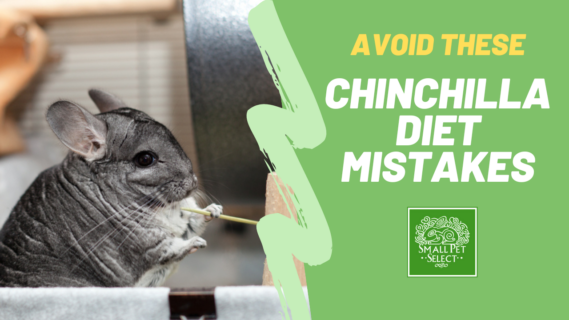A chinchilla diet isn’t complicated, in fact, it’s essential that you keep it simple. Chinchillas have sensitive digestive systems and there isn’t room for fancy additions.
Some well-intended chinchilla owners will try to change things up for the sake of fun, but there’s nothing fun about an upset stomach.
So, pull up a chair at the dinner table, and let’s talk about the best chinchilla diet, as well as the mistakes to steer away from!
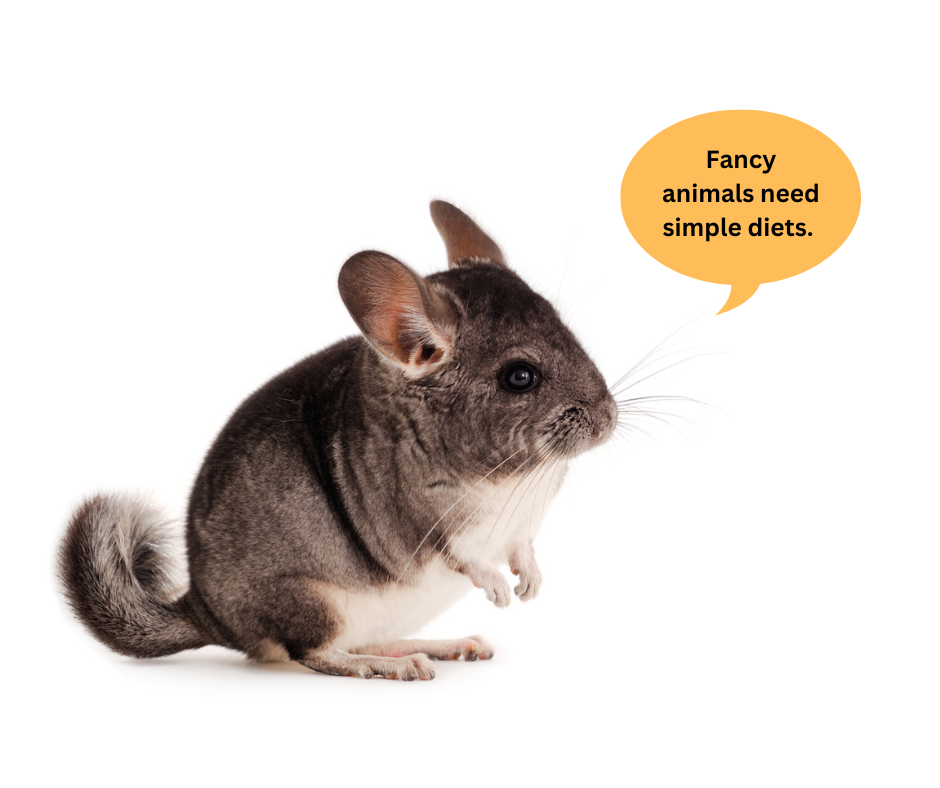
The Most Common Chinchilla Diet Mistakes
When it comes to feeding chinchillas, you need to stay focused. Focused on what you ask?
Fiber. Fiber all day every day. Here are some of the mistakes that distract from the focus and wreak havoc on a chinchilla’s digestive system.
Relying Too Much On Pellet Food
Pellet food is a great part of a chinchilla's diet, however, it’s a very small part of a chinchilla’s diet. Chinchillas should only have 1-2 TBS of pellet food a day. Consider it a multivitamin on the side of their bigger meal, hay.
When a chinchilla eats too many pellets, they fill up before they have had enough hay. This means their teeth haven’t chewed enough hay which leads to dental issues. A chinchilla needs to chew enough roughage to keep their teeth worn down as their teeth are always growing.
Filling up on pellets also provides a chinchilla diet too low in fiber for a chinchilla’s digestive system. So again, don’t let pellets pull you off course and away from the main focus!
Giving Treats That Are Too High In Fat or Sugar
Looking at that adorable fluffy face, who wouldn’t want to pour out love for the little guy? Love them we must, but let’s show love the right way.
Yep, love them with fiber. In this section, high-fiber treats!
Giving treats high in fat or sugar can really throw a wrench in their digestive system. It’s not what their digestive tract was designed to take on! They don’t have the gut bacteria needed for foods outside of their usual high-fiber chinchilla diet.
Hay Cubes are the perfect treat for chinchillas because they’re basically hay pressed into cubes. They get the fiber their body loves but with a new texture to keep them interested.
Love your chin with simplicity!
Don’t give your chinchilla:
nuts
seeds
grains
dairy products
yogurt drops
large pieces of fruit
Feeding Foods With Too Much Moisture
If you really want to spoil your chinchilla, small amounts of leafy greens, especially herbs, can be an option. Of course, don’t add anything to a chinchilla diet in a hurry. Any new food needs to be given in small amounts so you can see if it agrees with your chinchilla.
Chinchillas don’t need to have fresh food, but some chins do okay with small amounts of it. However, a big mistake is when a chinchilla diet has too much moisture as this can lead to diarrhea.
This looks like wet vegetables and vegetables with a high water content. This is why herbs are a better choice compared to lettuce when choosing fresh leafy greens for your chinchilla diet.
Fresh herbs should still be considered an occasional treat because as you know… we must stay focused!
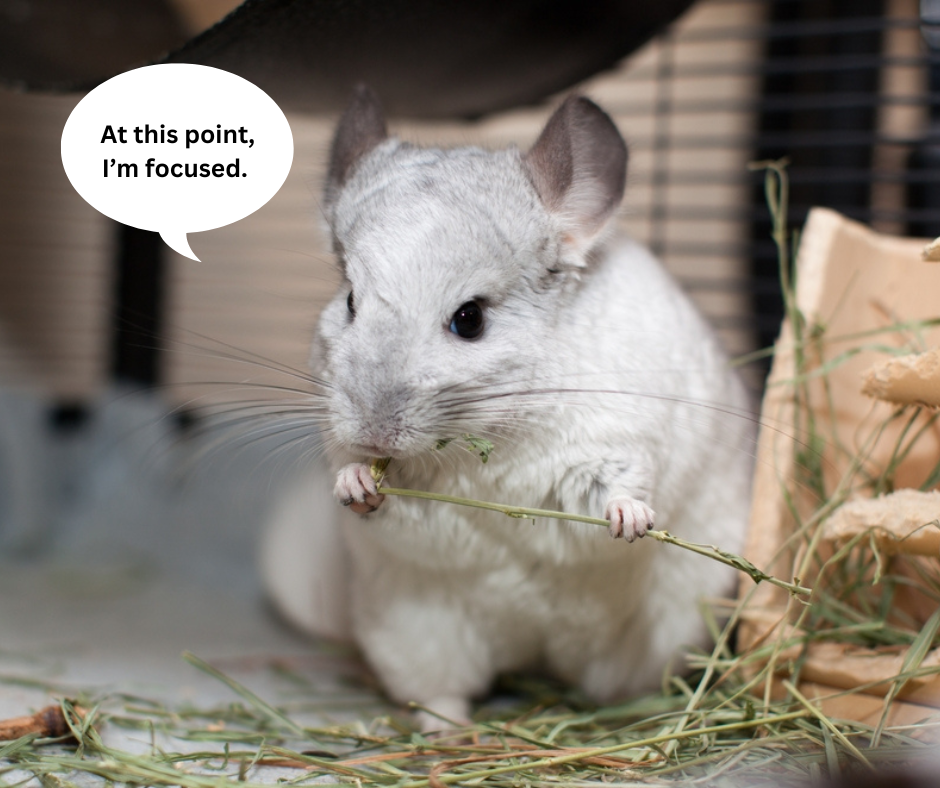
Not Using High-Quality Fresh Hay
Now, lean in for this one. There’s actually more to getting your chinchilla enough fiber than just offering enough fiber.
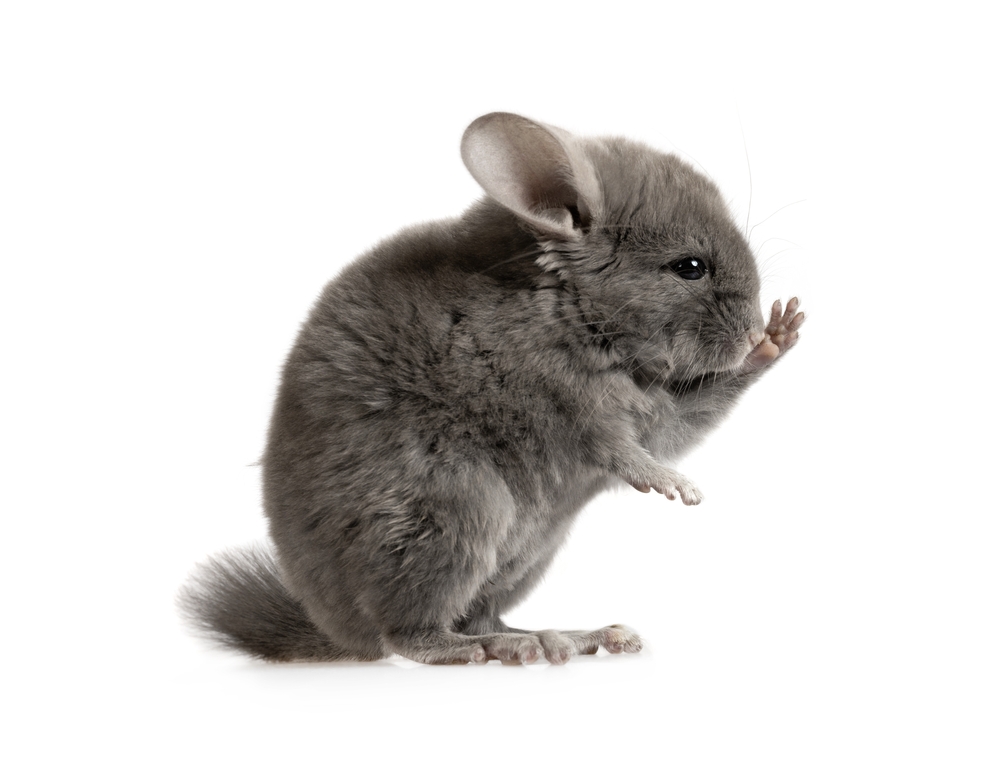
I know. You thought you had this whole thing in the bag.
You do, but only if the bag is full of high-quality fresh hay. You can’t force-feed your chinchilla. You can have the biggest pile of hay but if your chinchilla doesn’t want to eat it, their chinchilla diet still doesn’t have enough fiber.
Just as you know the difference between fresh high-quality food, so does your chinchilla. A bag of broken-up dusty brown pieces of hay is just going to end up as a cage liner.
By prioritizing quality hay, you will see your chinchilla eats a lot more of it! Leading to less waste as well. You aren't saving money buying low-quality hay if nobody eats it!
Keep Everything Moving
Fiber is what moves everything through a chinchilla’s digestive system. When there’s not enough fiber, the bulk and waste move slower. This is called G.I. Stasis where the digestive system isn’t moving quickly enough to stay healthy. This can lead to a blockage or where the digestive system stops altogether.
Signs of illness in chinchillas:
low energy
small appetite
diarrhea
constipation
hiding
drooling or wetness around the nose/eyes
sitting in a hunched position
If you notice any signs that your chinchilla isn’t feeling well, contact an exotic vet ASAP.
A Simple Chinchilla Diet Keeps Them Happy
Don’t forget to always provide clean fresh water for your chin. Chinchillas do best when their diet is kept to the basics. If you’re trying to make you and your chinchilla’s day exciting, don’t do it with food.
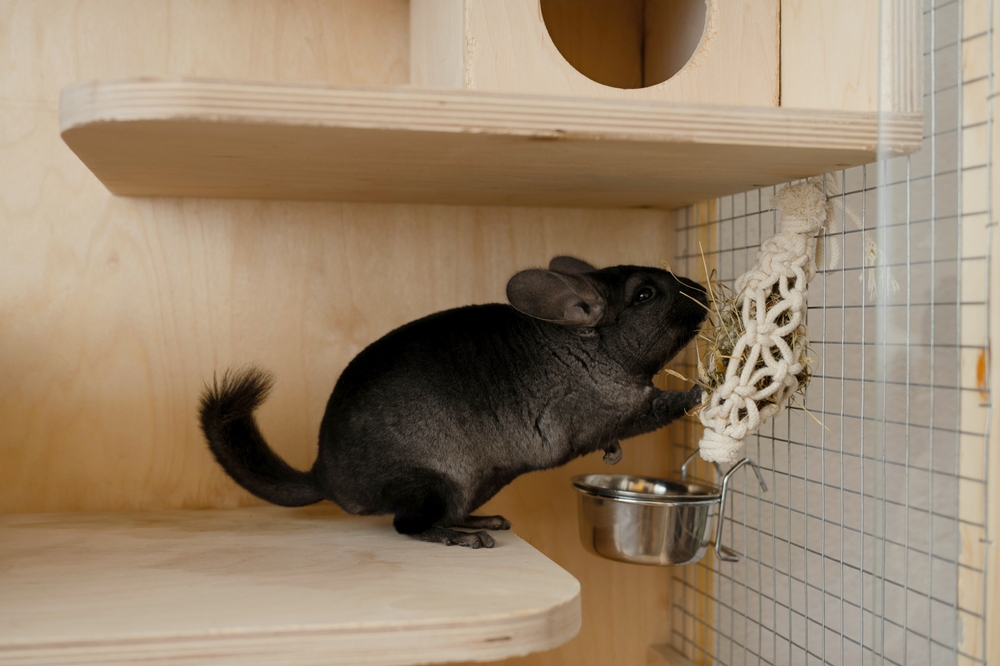
Make their environment more exciting! And with a simple diet, they will have plenty of energy to explore it. Use toys and chews to add some enrichment to their enclosure. Hang up a hammock, add more ledges, and give them a hideout. There are plenty of ways to add some variety to their life without messing with their internal organs.
Stay focused chinchilla parents!
Chinchilla research is continuously growing! If you have any doubts or concerns contact your exotic vet.
We are not veterinarians, and none of our information should be construed as veterinary advice.



